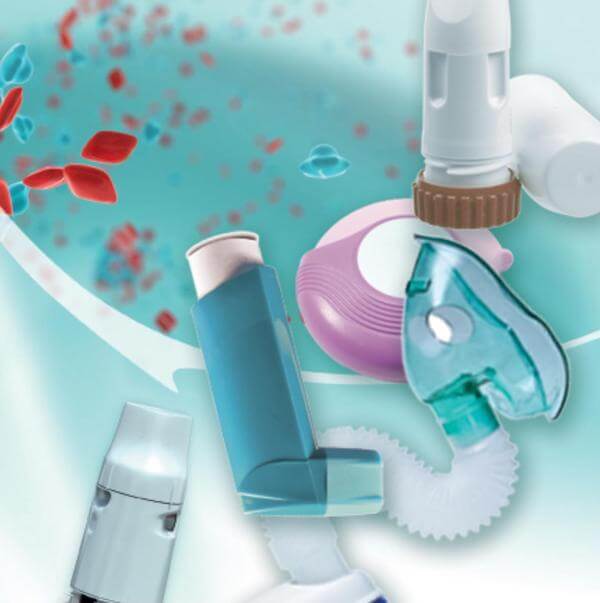Next generation digital solutions for asthma
Asthma is a chronic disease that attacks an individual’s airways (bronchi) and lungs. People who have the disease will experience attacks of breathlessness, wheezing, tight chest and uncontrolled coughing since the airway is inflamed and narrowed. The effect of asthma varies from one person to the other as some people experience it a lot, while others may be normal between attacks.
Several situations can trigger asthma attacks like vigorous exercise, stress, cold air, dust and excess heat. Some triggers include ‘allergens’ which are contained in chemicals like animal danders, pollen, pollution, house dust, perfumes, cigarette smoke, and some foods. When allergens enter your body, they will cause the lining of airways to be swollen and inflamed.
Ths produces extra mucus tightening the airway muscles thus reducing room for air to circulate. If you have a chest infection, the attacks will be more severe. According to the World Health Organisation, there are over 235 million people who have asthma globally.
The disease is most common in children with more related deaths (80%) occurring in low and middle-income areas. By 2016, it was estimated that 383, 000 people died of asthma.
With the right medication, however, this can be reversed. People with asthma can also be able to enjoy a normal quality of life when they have the appropriate management of the disease. With the number of asthma patients increasing around the world, the use of digital technology can help manage asthma condition.
Looking at the data, If we do not have such technologies, it is evident that more people living with asthma may not adhere to a personal asthma action plan even when those who use it are less likely to get hospitalized due to the attack. With today’s technology, these numbers can increase by ensuring that those who are high risk are given early intervention.
Digital solutions include linking treatment plans to smart devices like wearables and smartphones which will alert and motivate them to self-care and ensure that they act whenever attacks are sensed. This is because it has been realized between 30-70% of people never take their asthma treatment plans seriously.
With digital technology, they will be able to plan their treatment and take care of themselves. Some of the innovative medical devices, wearables and mobile applications for management of asthma include smart inhalers like Hailie and Medsmart.
These technologies help manage asthma by sharing data from the patient, providing reminder alerts for inhaler intake and monitoring trigger signs.
Among the top startups include Alung technology, for example, came up with a lung assist gas exchange technology for treating respiratory disorders. Spirosure also came up with a breath analysis device that detects and exhaled nitric oxide for asthma patients. Biolum came up with mobile technology for the diagnosis and treatment of asthma away from the hospital. The device also analyzes exhaled breath to determine oxidative stress from the user’s lungs.
Apart from providing treatment, the market for asthma treatment is one of the highest in the world. Globally, the market accounted for USD 20.7 billion by 2015 with an estimated growth rate of 2.2%. Also, the demand for innovative treatment will lead to market growth. The market for smart inhalers is also expected to rise by $1.63 billion by 2022 the market is expected to rise by $3.4 billion in 2024 with the dry inhalers holding the largest markets.
| Recommended for you | |
| Apple’s asthma health app: An integral part of Apple Research Kit | |
| Ensuring medication safety with digital applications | |
| Top 10 mobile apps for personal medical records |
Top digital solutions for Asthma Patients
1. Respia: The product manufacture by Respia Inc. is a wearable digital device that works like a stethoscope. The device will give the user a haptic tap when it senses that you are having difficulties in breathing, thus prompting you to take early measures.
2. Asthma Grid: This wearable sensor developed by South Africa’s Amaphiko manages asthma while creating a unique data on the environment, aerial allergens and other pollutants that trigger a patient’s asthma using a built-in nano-sensor.
3. Smart Inhalers: Smart inhalers developed by Sensiron work with Bluetooth technology which detects the use of inhaler by the patient. In this technology, the patient will be reminded to take medication while it also gathers data to help in guiding future treatment.
4. Asthma Buddy: National Asthma Council of Australia, developed this application. when installed in your smartphone for both iPhone and Android, will allow the user to record their action plan and email to a doctor will let them track changes in their symptoms.
5. Wizdy Pets: The application developed by the Wizdy game, is made for children and features adorable images, quizzes, videos and games which make children feel comfortable with their condition. It has an action plan that helps the child communicate better with healthcare providers.
6. ADAMM: This is an intelligent asthma monitoring wearable manufactured by healthcare original and is used to identify an incoming attack before the wearer notices.
What’s next in Asthma therapeutics market?
With about 300 million people estimated to live with asthma around the globe, it calls for innovative solutions that ensure early detection, treatment, and management of the condition, Asthma is known to cause death which makes it a dangerous disease.
Innovations in the management of asthma through smart technologies assure adherence, reduces mortality rates and will also improve the health of the individual.
There need to be more investments toward the development of digital technologies especially for the low and middle-class groups and regions. This is because they are the most affected by the disease. Other interventions like environmental management, reducing air pollution and investments in technology-based solutions should be considered in the future treatment of asthma.
In this way, it calls for the partnership of both people from the medical fraternity and technology-based companies to incorporate asthma medications and treatment plans to technology… this will enable patients to monitor their conditions and for doctors to learn more about patient improvement and provide recommendations.
Image credit: By Тетяна Фіонік [CC BY-SA 3.0 ], from Wikimedia Commons

















